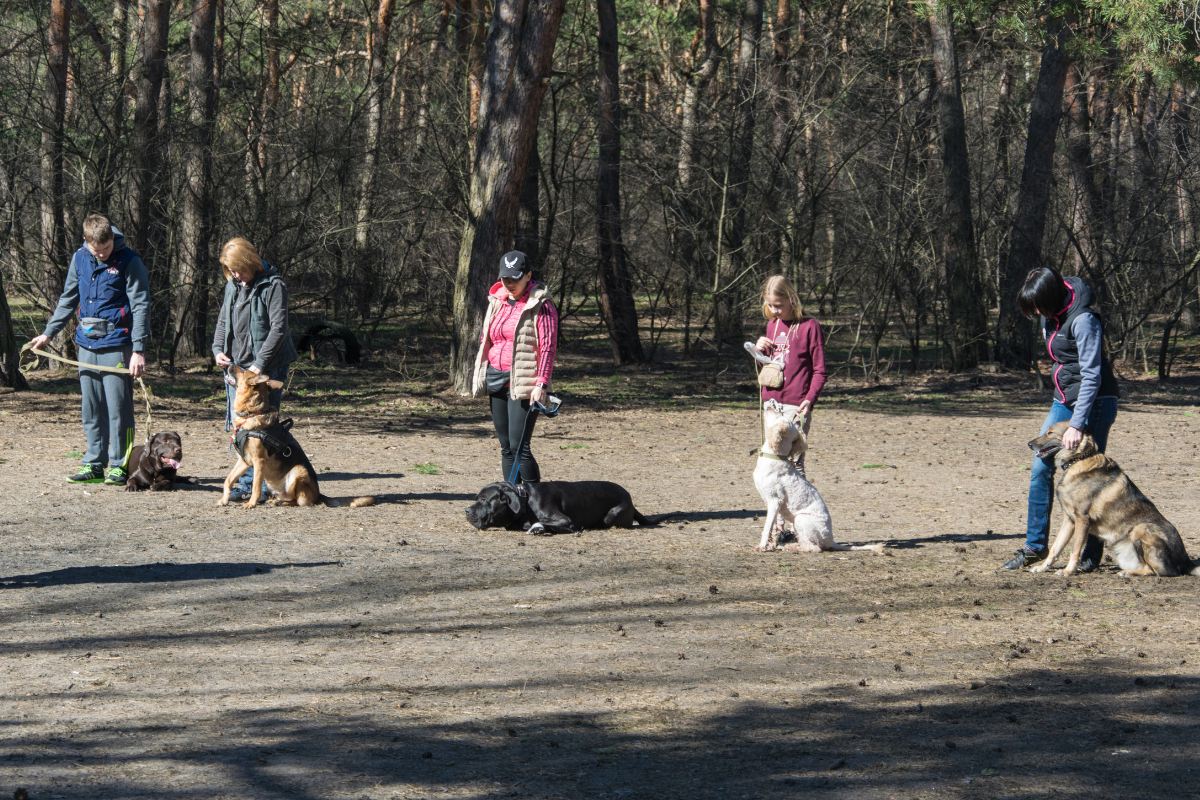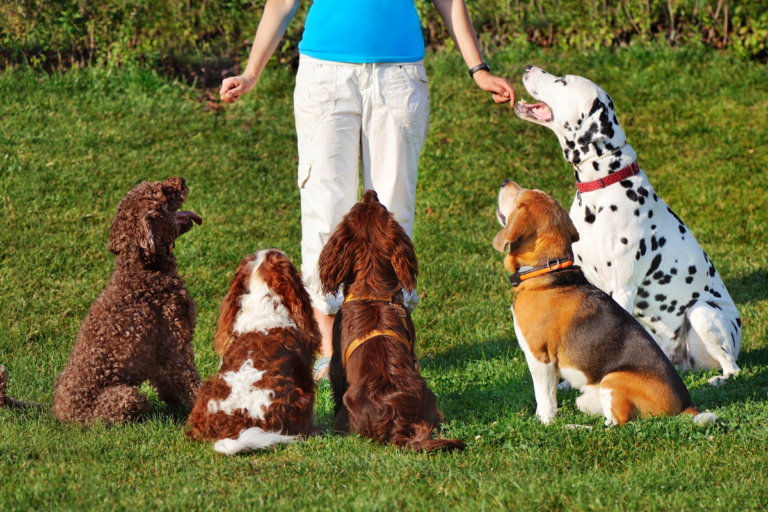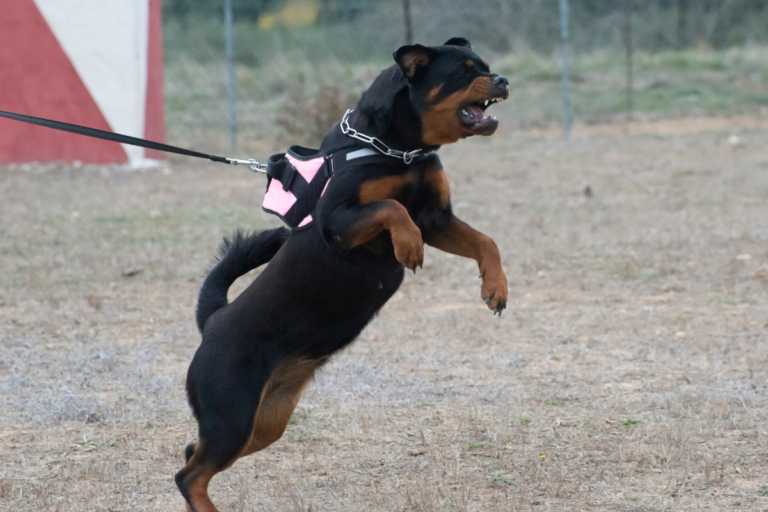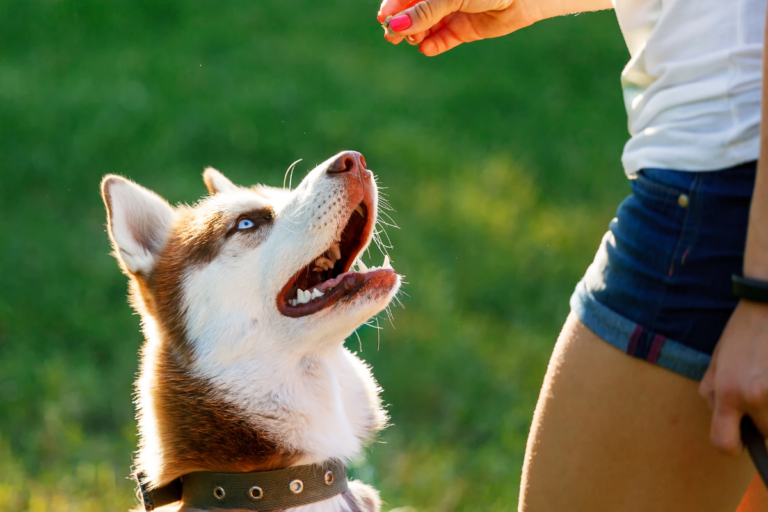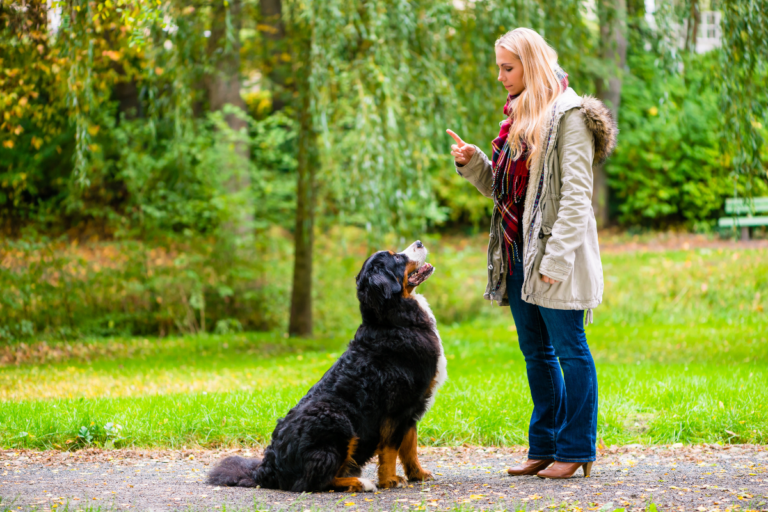Empower Your Pooch: Enroll in Our Positive Reinforcement Training Classes
Importance of Dog Training
Getting why dog training matters is a big deal in shaping how you and your doggy get along. By signing up for some dog training classes, we’re stepping towards having a well-behaved, joyful, and self-assured pup.
Building the Dog-Owner Bond
Dog training classes are all about making your dog fall in love with learning while beefing up the connection between you and your furry buddy. These classes don’t just see to it that your pup’s on its best behavior; they’re about building that mutual trust and respect we all want. Using positive reinforcement is where it’s at. It’s as simple as handing out treats or giving a pat on the back when your dog does something right, creating an eagerness in them to learn and make you proud.
| Benefit | Description |
|---|---|
| Better Social Skills | Dogs become less likely to ruin the sofa or dig up the garden (Full Kontrol Canine) |
| Stronger Connection | Helps build trust and respect (American Kennel Club) |
| Enjoyable Company | Well-trained dogs fit in better socially (Full Kontrol Canine) |
Looking for a solid dog trainer? Get the lowdown from locals or hit up places like AKC’s approved CGC evaluators list or the CCPDT directory. Doing your homework is vital to landing the best trainer for your pooch. For more insights, see our guide to trainer background and credentials.
Positive Reinforcement Methods
Positive reinforcement is all about flipping a dog’s behavior using rewards. According to The Humane Society of the United States, those rewards need to pop up right after the good behavior to really work. Here’s what you need to know:
- Immediate Rewards: To keep the behavior flowing, toss in some praise or a snack right after the good act.
- Clicker Training: Pairing a click with a reward makes teaching new tricks and commands a whole lot smoother since that click’s like speaking dog (K-9 Culture).
| Training Method | Description |
|---|---|
| Treat-based Learning | Handing out treats instantly following a positive act |
| Praise and Patting | Giving props and gentle pats as rewards |
| Clicker Training | Using a click sound tagged with goodies for better dog communication (K-9 Culture) |
Positive reinforcement isn’t just about laying out ground rules for our dogs—it makes the whole learning gig fun. It tightens the bond between us and our pups while encouraging stellar behavior. For extra tips and resources, take a look at positive reinforcement methods.
Choosing the Right Trainer
Picking a dog trainer ain’t just about finding someone who loves dogs as much as we do. It’s about giving our furry companions the top-notch schooling they deserve.
Trainer Background and Credentials
Sure, anyone can call themselves a dog trainer, but that doesn’t mean they’re the best fit for our four-legged pals. We gotta dig into their history and see if they’ve got the right chops. Trainers might have learned their skills through hands-on training or hitting the books. If they’re certified by the Certification Council of Professional Dog Trainers (CCPDT), it’s a good sign they’ve got their act together and are serious about keeping their skills sharp (American Kennel Club).
Here are some standout certifications and groups to keep an eye out for:
| Certification/Organization | Description |
|---|---|
| Certified Professional Dog Trainer (CPDT) | Certifies a trainer knows their stuff and meets professional standards. |
| Association of Professional Dog Trainers (APDT) | A badge of honor showing they’re committed to quality. |
| AKC Canine Good Citizen (CGC) Evaluator | Qualified to run AKC’s CGC tests. |
Being certified isn’t just about prestige; it means they know what they’re doing and follow best practices.
Finding the Perfect Match
The hunt for the perfect trainer also means finding someone who clicks with our pup’s personality and our goals. Word from other dog owners, or even checkin’ out the AKC’s list of recommended trainers, can be pure gold (American Kennel Club). Dive into directories like those offered by CCPDT or The Association of Professional Dog Trainers and make the most of those great resources.
Here’s how we can zero in on the match made in heaven:
- Seek Referrals: Chat with fellow dog lovers or snoop around online resources.
- Research Thoroughly: Sniff out what each trainer’s history and approach are like.
- Interview Trainers: Grill ’em on their experiences, techniques, and success tales.
- Observe a Class: Watch them in action to see their style firsthand.
Finding a trainer who believes in giving a thumbs up for good behavior with treats, toys, or kind words is key. Positive reinforcement is the name of the game, and it works wonders (K-9 Culture).
For more tips on this and specific training techniques, we’ve got some neat reads for you on handling a reactive dog and which breeds might be the easiest to train. Our job is to arm ourselves with knowledge to make the best decisions for our dog’s learning journey.
When we check off the boxes for credentials and personal fit, we set our pupper up for a successful, happy student life. Let’s make those wise choices and invest in their bright future.
Types of Dog Training Techniques
Trying out different ways to train our dogs helps us pick the best strategy to keep them on their best behavior. Let’s chat about clicker training, leash and collar training, and obedience and behavioral training.
Clicker Training Method
Clicker training is all about cracking out that click noise, along with a treat, to tell our dogs they’ve nailed it. It works wonders when teaching new tricks and commands. So, when our pooch does something good, we hit them with the click and a snack, making it clear they’re on the right track.
| Pros of Clicker Training | Cons of Clicker Training |
|---|---|
| Great for new tricks | Needs consistency |
| Gentle and easy | Got to lug the clicker and treats |
| Builds good doggy talk | Could take time for them to get it |
Clicker training’s ideal for owners who want to reinforce behaviors and commands in a positive way. Check our handy guide on puppy training classes for more tips.
Leash and Collar Training
This one’s about showing our dogs who’s boss on the walk, teaching them proper leash etiquette. It’s all about finding that perfect collar to keep things safe and sound for effective training.
| Pros of Leash and Collar Training | Cons of Leash and Collar Training |
|---|---|
| Instills good walking habits | Can be uncomfy if not done right |
| Vital for stroll time | Not always the best for every pup |
| Good for dogs who react on leash | Choosing the right collar is important |
This is great for owners dealing with reactive dogs and working on those leash-tugging troubles. Picking the right gear and a gentle touch is key for keeping our dogs comfy and happy.
Obedience and Behavioral Training
Obedience training is all about the basics: sit, stay, come, and heel – using treats and praise to get results. This kind of training is fantastic for building a great bond with our dogs and keeping them from mischief.
Behavioral training kicks in for those naughty habits like endless barking, biting, digging, or jumping. It digs deep to fix what makes our dogs act out, changing how they respond.
| Training Type | Focus | Example Benefits |
|---|---|---|
| Obedience Training | Basic Commands | Better communication |
| Behavioral Training | Problem Behaviors | Fewer unwanted antics |
For pet parents wanting a strong connection with their dogs, obedience gives the basics while behavioral training zeros in on specific issues for peaceful living.
By playing around with these training styles, we can decide what’s best for our dogs, guaranteeing a cheerful, well-behaved buddy. If you’re looking to dive deeper into these methods, our blue dog training page has tons of info and advice to get you started.
Benefits of Dog Training Classes
Strengthened Communication
Dog training classes? Oh, they’re the bee’s knees for getting on the same page with our pooches. We cut to the chase by using rewards and treats to say, “Hey, that’s the stuff we like!” Our four-legged pals quickly learn what tickles our fancy, making the relationship way smoother.
No rocket science here. Just quick rewards for good deeds. It’s like having a secret handshake with your dog. Everybody in the family should be in on it too, so no one’s left out in the cold.
Here’s what we drill into their cute little fluffy heads:
| Command | What It’s Good For |
|---|---|
| Sit | Throws a wrench in jumping and keeps the peace. |
| Stay | Keeps our furry friends safe and sound when things get wild. |
| Come | Ensures they hustle back to us, preventing runaway shenanigans. |
These commands aren’t just words, they’re the building blocks of good manners. For some juicy tips, check our piece on sit dog.
Enhanced Socialization Opportunities
A dog’s gotta mix and mingle, and classes are the social hotspots. It’s where they learn not to freak out when they see someone new. No more barking up the wrong tree or having a meltdown in the park. Plus, the more they hang out with other dogs and folks, the more savvy they get.
In a training class group, your pup makes pals and learns the ropes. They start to chill out and become real pros in different spots. A dog that can roll with the punches is a happy dog.
Why socialization’s the best thing since sliced bread:
- Better Behavior: Keeps them from picking fights or being all angsty.
- Chill Vibes: A little social action goes a long way in easing their nerves.
- Quicker Learners: They soak up new tricks like a sponge when relaxed in crowds.
If you’ve got a feisty Fido or a new pup, we’ve got the know-how to tackle everything from aggressive dog training to puppy training classes.
Signing up for dog training classes isn’t just about manners and tricks; it’s about helping our canine companions lead happy, well-balanced lives. Who wouldn’t want that?
